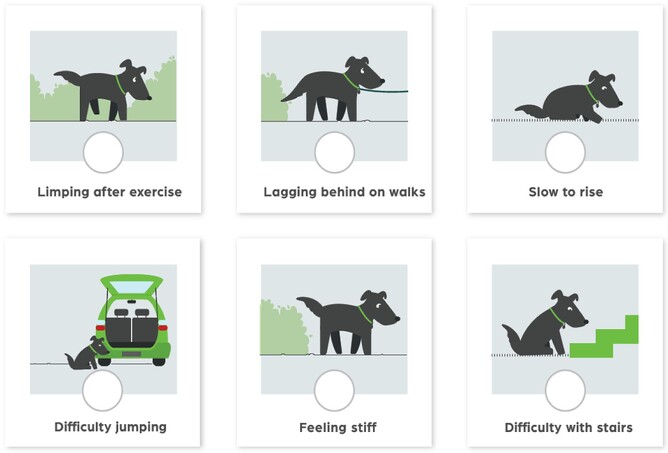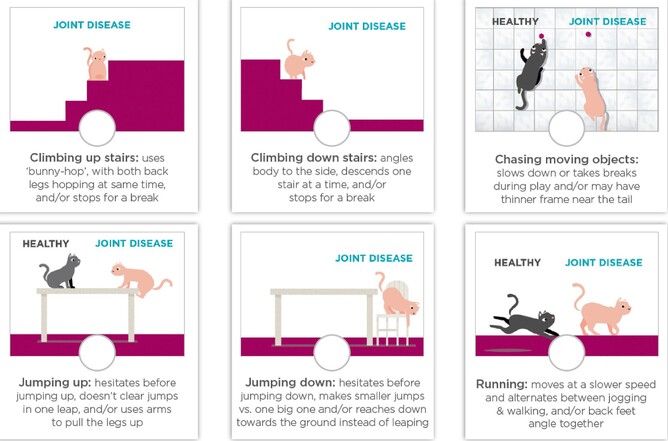How to spot the signs of joint disease in your pets.
Osteoarthritis - also known as Degenerative Joint Disease - is a chronic, progressive, minimally inflammatory disorder of joints that leads to damage in the joint structure.
It affects one in five adult dogs and is even more common among older dogs. Cats can also develop arthritis as they get older, with around 90% of cats over 10 years old suffering with it in at least one joint.
Many cases go undiagnosed because owners interpret the subtle changes in their pet to "slowing down" or "getting old".
Unfortunately, arthritis is a progressive condition and there is no cure. However, you can work with your vet to design a treatment plan that will alleviate pain and slow down the disease's progression. This enables most pets to live a happy and fulfilling life.
What causes arthritis?
Arthritis usually results from abnormal stresses acting on the joint, which can include:
Abnormal joint conformations,
Increased pressure, due to the animal’s weight,
Trauma,
Normal wear and tear that comes with age,
Sometimes it can even just happen one day with no specific cause.*
How to tell if your pet is struggling with arthritis
Below are some handy infographics, courtesy of Zoetis, that can help you to identify clinical signs of osteoarthritis in your dogs and cats.
Dogs:
Cats:
Check your pet
Regardless of what causes arthritis, it can be very painful for your pet. Just like for us, this pain can affect their quality of life if we don’t do anything to manage it.
Have a look at your pet’s activity over the last week and see if you can spot any of the above signs. If so, book an appointment with the clinic to discuss pain management options for your furry friend.
*Reference: W., N. R., & Couto, C. G. (2003). Small Animal Internal Medicine 3rd Edition. Missouri: Mosby.



